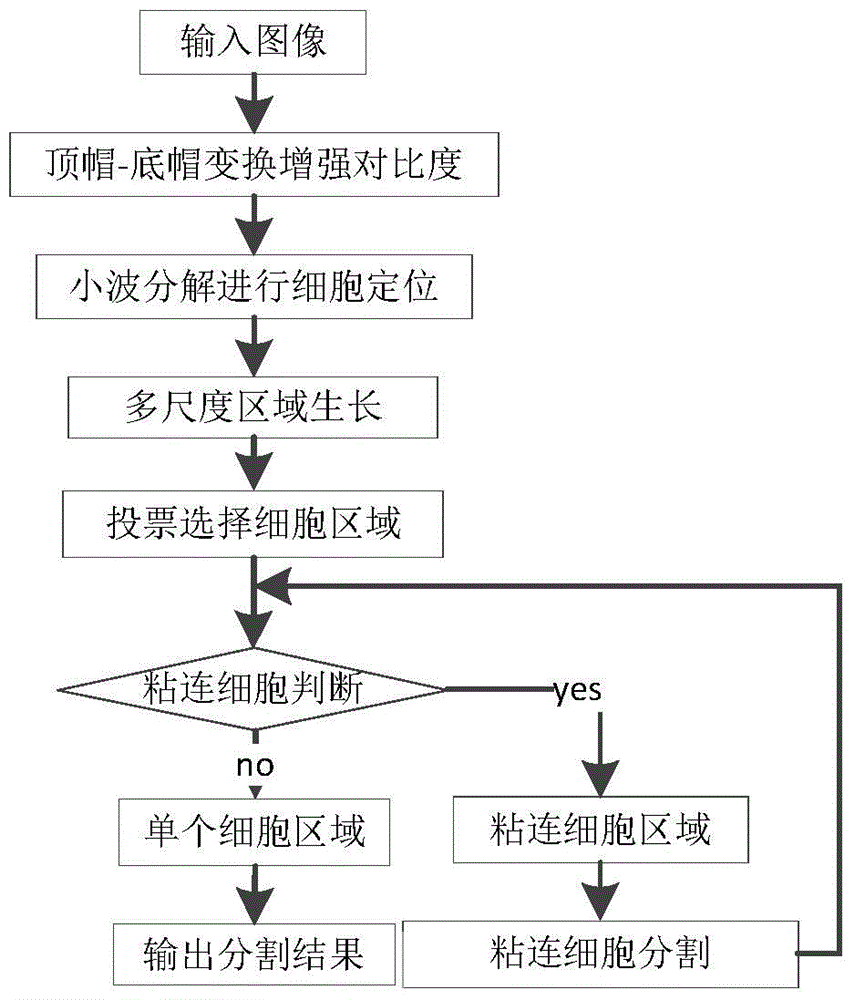Mammary glandular cell segmentation method based on multi-scale growth and double-strategy adhesion-removing model
A multi-scale, segmentation algorithm technology, applied in the field of image processing, can solve problems such as incomplete suppression, wrong positioning, and inaccurate segmentation line acquisition, and achieve the effect of improving recognition accuracy and segmentation accuracy
- Summary
- Abstract
- Description
- Claims
- Application Information
AI Technical Summary
Problems solved by technology
Method used
Image
Examples
Embodiment Construction
[0043] The present invention will be further described below in combination with specific embodiments and accompanying drawings. The specific embodiments described here are only used to explain the present invention, not to limit the present invention.
[0044] Such as figure 1 As shown, a breast cell segmentation method based on the multi-scale growth and dual-strategy de-adhesion model follows the following steps:
[0045] Step 1: Input breast tissue image and convert it to grayscale image;
[0046] Step 2: enhance the contrast of the grayscale image obtained in step 1;
[0047]Due to reasons such as staining and lighting, the collected breast cell slice images have problems such as uneven contrast and complex background. In order to obtain a better segmentation effect, the image needs to be preprocessed. Here, the top-hat-bottom-hat transformation is used. To achieve image contrast enhancement, the specific process is as follows:
[0048] TB(x,y)=g(x,y)+(g(x,y)-(g(x,y)о...
PUM
 Login to View More
Login to View More Abstract
Description
Claims
Application Information
 Login to View More
Login to View More - R&D
- Intellectual Property
- Life Sciences
- Materials
- Tech Scout
- Unparalleled Data Quality
- Higher Quality Content
- 60% Fewer Hallucinations
Browse by: Latest US Patents, China's latest patents, Technical Efficacy Thesaurus, Application Domain, Technology Topic, Popular Technical Reports.
© 2025 PatSnap. All rights reserved.Legal|Privacy policy|Modern Slavery Act Transparency Statement|Sitemap|About US| Contact US: help@patsnap.com



